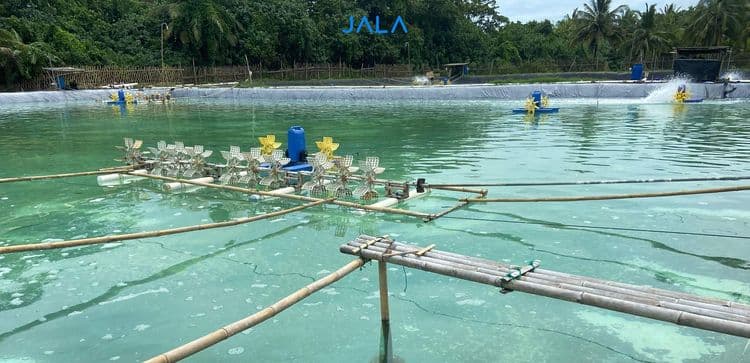
Data recording is a regular and important activity in shrimp farming. A comprehensive data will contribute to cultivation’s excellence. Data that need to be recorded are not limited to the components in the pond, such as water quality, but also feed, harvest, disease, mortality, stock, and farm finances.
Water quality consists of numerous parameters that need to be recorded, namely pH, dissolved oxygen (DO), salinity, temperature, light, water color, chemicals, plankton, and so on. The quality of pond water becomes one of the keys to healthy shrimp and cultivation because water serves as the medium for shrimp to live and grow. If water quality is not maintained properly, shrimp will be susceptible to disease, which definitely hinders the cultivation process. Therefore, water quality parameters must be monitored and maintained to remain in ideal range.
Additional reading: 7 Pond Water Data to Monitor in Vannamei Shrimp Farming
Benefits of recording cultivation data
The other data is also crucial as there are various aspects in shrimp farming. The recorded data will generate significant information regarding cultivation conditions, hence farmers do not have to forecast or memorize it. Besides, recording cultivation data has a lot of other benefits for farmers. Let’s discuss it.

Cultivation conditions can be properly monitored
Through data records, farmers would be able to identify whether their cultivation is already in ideal condition or encountering problems. Every water quality parameter, as well as other cultivation aspects, has a certain ideal range. With data, cultivation aspects can be monitored more efficiently and accurately.
Data can be used as a decision-making instrument
The data collected can be used as a decision-making instrument according to the latest cultivation condition. An accurate data collecting tool or method, such as water quality data from lab test results or parameters measured using a special device, supports this. For example, the results of water temperature show a decline. Farmers can immediately decide the treatment to apply to get the temperature back to its ideal range.
Anticipating disease and other unpredictable conditions
Disease outbreaks can be anticipated with comprehensive data. When shrimp start to show disease symptoms, farmers must begin to be alert and keep track of how the symptoms develop day by day. In certain cases, disease can be detected through a spike in appetite or an increase in bacterial population. There are also diseases caused by water quality fluctuations.
The data can be used to identify the attacking disease before finally being tested in the laboratory. Furthermore, farmers can immediately determine the right treatment as soon as they identify that their shrimp are infected with disease. In addition to disease, other unpredictable occurrences such as cultivation failure can also be anticipated.
Helping to identify the causes of cultivation failure
Once a cultivation cycle fails, data records in that cycle can help farmers in identifying possible causes of failure. For example, if failure is caused by disease, farmers can identify when the disease’s symptoms start to appear along with significant changes in some of the parameters relating to the water quality. Another example, if failure is caused by high FCR, farmers can identify what causes it, such as low temperature, high plankton populations, and so on. Farmers can do so with regularly recorded data.
Farmers need to be consistent in recording cultivation data regularly. The series of data can be insightful information that helps cultivation succeed. In the end, farmers will benefit much from the consistency of recording of cultivation data.





